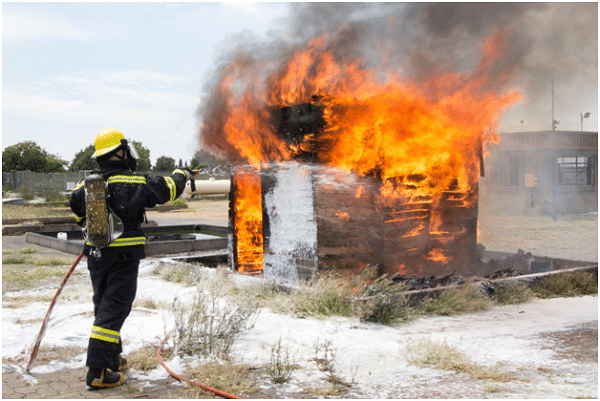
Residential and commercial buildings in Australia are often equipped with fire hoses and fire hydrants as a means of fire suppression should a blaze break out. Sometimes, that fire hose could prove the difference between life and death when it comes to escaping a building engulfed in flames.
High-rise buildings, apartment blocks, and commercial premises should all have fire hoses as a precautionary measure. Hopefully, they never have to be put to use but they must be there just in case. When it comes to fire hose reel regulations, NSW and each of the other Australian states and territories have specific guidelines regarding their implementation and use. To fully understand these regulations and what’s required, consult with your fire protection services company.
On the subject of fire hose reels, people must know how to use them, so they can spring into action without hesitation if a fire does ever break out. Let’s go through a quick guide to using a fire hose reel.
Before Operating the Fire Hose
If there is an emergency alarm system in your building, activate that first, then go around and alert everyone in the immediate vicinity of the fire danger. People need to start evacuating immediately and assembling at the designated assembly point safely outside. Someone also needs to call the fire department.
Another very important thing you should do before operating the fire hose is to check the fire and see if you can determine what is burning. Fire hoses are generally used for Class A fires, which includes things like fabric, paper, and wood burning. If the fire is electrical, or gas is its main fuel source, don’t operate the fire hose as you could end up making the situation worse. Instead, see if there is a fire extinguisher handy that’s designed to extinguish those types of fires.
Operating the Fire Hose Reel
When you are about to use the fire hose reel, make sure you are fully aware of where the nearest clear exit is at all times. Also, you won’t want to stand too close to the flames when operating the hose.
Now, check that the nozzle is in the “closed” position and then turn on the valve. Once that’s done, unravel the hose from the reel until you have enough hose to reach the proximity of the flames. Now it’s time to open that nozzle up and let the powerful stream of water escape. Maintaining a safe distance at all times, always aim the water jet at the base of the flames, as that’s where the fire is actually consuming the fuel. Merely waving a spray of water over the fire is largely going to prove ineffective in dousing it.
If the flames refuse to extinguish and the fire appears to be intensifying, don’t stick around to play the hero. Ditch the fire hose and escape through the nearest exit. You can only do so much and employing the use of the fire hose reel is not always a guarantee you’ll be able to gain control of the fire and extinguish it.
Fire Hose Reels Should Be Regularly Checked and Tested
This is the responsibility of building managers and owners. To ensure your fire hoses are in top working order and ready to deploy should the need arise, they need to be periodically checked and tested by a fire protection expert. It’s the only way to ensure your equipment will work when it has to.
The same applies to all other fire safety and prevention equipment within the building, such as fire sprinkler systems, fire extinguishers, and so on. Everything needs to be checked and maintained to remain in good working order.
It’s all about safety for the building’s occupants, as well as protection against excessive property damage.
The Takeaway
It’s important that people within the building know how to operate a fire hose, should the need ever arise. It’s also important for building owners and business owners to be aware of the fire hose reel regulations in NSW and each of the other states. Always consult with your fire safety and protection expert when it comes to fire protection for your building.